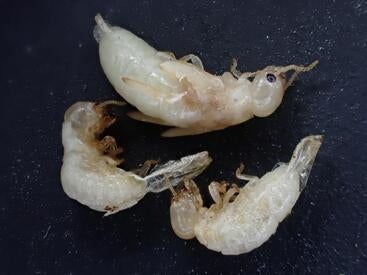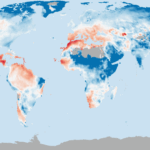2025-05-06 カリフォルニア大学リバーサイド校(UCR)

Termites deceased from bistrifluron treatment. Failed, incomplete molting process is evident. (Dong-Hwan Choe/UCR)
<関連情報>
- https://news.ucr.edu/articles/2025/05/06/discovery-better-more-targeted-termite-terminator
- https://academic.oup.com/jee/advance-article-abstract/doi/10.1093/jee/toaf064/8087005
イエシロアリ(Blattodea: Kalotermitidae)におけるキチン合成阻害剤の毒性と水平移動 Toxicity and horizontal transfer of chitin synthesis inhibitors in the western drywood termite (Blattodea: Kalotermitidae)
Nicholas A Poulos , Chow-Yang Lee , Michael K Rust , Dong-Hwan Choe
Journal of Economic Entomology Published:19 March 2025
DOI:https://doi.org/10.1093/jee/toaf064
Abstract
Three chitin synthesis inhibitors (CSIs), bistrifluron, chlorfluazuron, and noviflumuron, were evaluated for their toxicity and horizontal transfer against the western drywood termite, Incisitermes minor (Hagen), when used to treat wood. In a no-choice bioassay, bistrifluron provided significantly faster kill than chlorfluazuron or noviflumuron treatments at 0.1 and 0.5% (wt/wt) rates over a 60-d period, providing 99% mortality. In a choice bioassay using 0.1% rate, bistrifluron provided a significantly faster kill than chlorfluazuron or noviflumuron treatments over a 60-d period, resulting in 96% mortality. In a transfer bioassay, a group of bistrifluron-fed termites, donors (D), was placed with a group of unexposed nestmates, recipients (R). Based on the visual marking, the food material of the donor termites was readily transferred to the recipients within 24 to 48 h. Overall, survival curves were similar between 1:19 (5% donor) and 10:10 (50% donor) D:R ratios, resulting in 100% mortality by day 90. This result indicated that lethal doses of bistrifluron were retained and effectively transferred, even from limited numbers of termites that originally ingested the compound. Implications for drywood termite management and future development are discussed.


